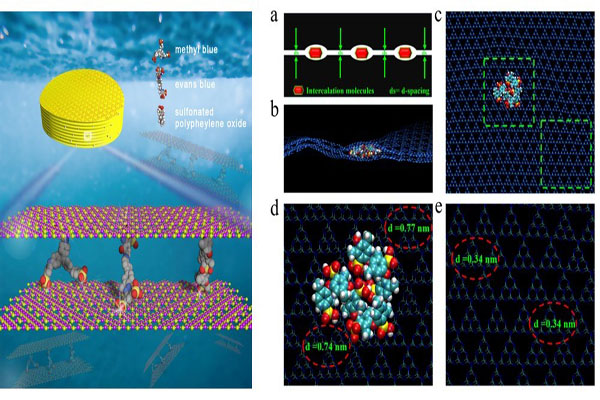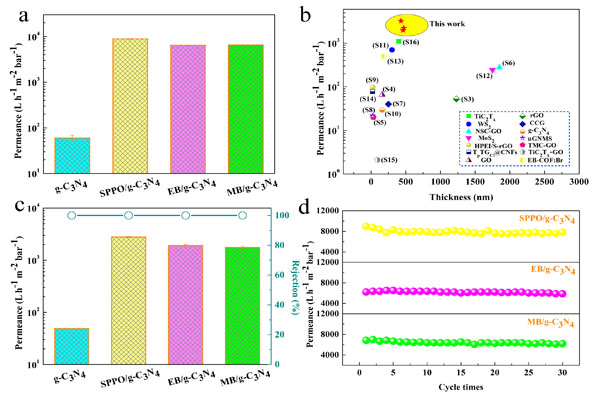Aresearch team led by RAN Jin, associate professor at the School of Chemistry and Chemical Engineering collaborated with the group of Professor XU Tongwen at the University of Science and Technology of Chinato developg-C3N4 membranes with superior permeability and stability. They published their results entitled “Endowing g-C3N4 membranes with Superior Permeability and Stabilityby Using Acid Spacers” inAngewandte Chemie(International Edition)on September11, 2019 (DOI: 10.1002/anie.201908786). RAN Jin is the first author of this paper, and the second author is PAN Ting, a postgraduate at the School of Chemistry and Chemical Engineering. The corresponding author is Professor XU Tongwen from the University of Science and Technology of China.
Recently, two-dimensional (2D) materials (for example, graphene, metal–organic framework (MOF) nanosheets, covalent organic framework (COF) nanosheets, exfoliated dichalcogenides, and MXenes ) have emerged as promising building blocks for the construction of the next-generation nanofiltration membranes. Previous researchers have discovered the water transport through the g-C3N4 membrane occurred with ultra-low friction, and higher permeances could be accomplished because pores can offer additional routes for mass transport. However, the resulting g-C3N4 lamellar membrane only shows a moderate water flux, which is even lower than those of 2D membranes stacked by dense nanosheets.

The team considered the narrow interlayer spacing with a size of 0.32nm in g-C3N4 membranes is adverse for rapid water penetration.Previous researches foundpure graphene membranes generally present low water fluxes, while partially oxidized graphene (GO) membranes have dramatically higher water permeances. It is attributed to the fact that oxidized zones act as spacers to provide rather large interlayer distance to accommodate water molecules. Inspired by the structure characteristics of GO, the team incorporated appropriate spacers between g-C3N4 interlayers to enlarge the width of the 2D channels.

For g-C3N4 based membranes, altering the amounts of intercalation spacers shows no obvious effects on the rejection performances, but the water fluxes change significantly. For example, as increasing SPPO intercalation, the permeance of SPPO/g-C3N4 increases from 7953 to 8867L h-1 m-2 bar-1. This study paves a way for the development of highly stable 2D lamellar membranes with superior permeability and stability.
This project was financially supported by the National Science Foundation of China, International Partnership Program of Chinese Academy of Sciences, and the Fundamental Research Funds for the Central Universities.


 HOME
/
Content
HOME
/
Content
